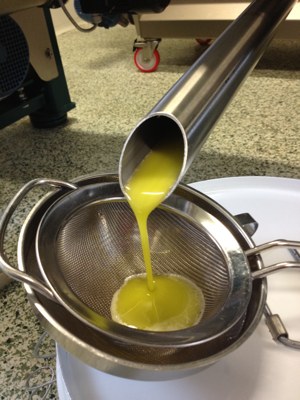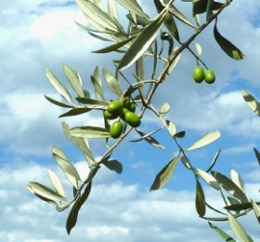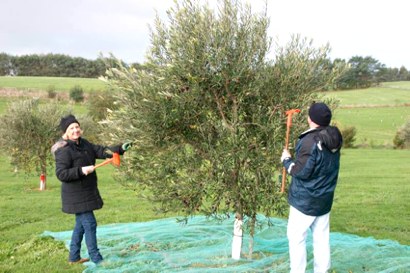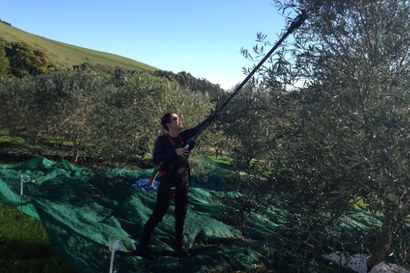Minimum Production Quality Standards
Version 1 - June 2012
Olive Oil is the oily juice obtained from olives, which is separated from the other components of the fruit. When obtained by using suitable processing systems and from good quality, fresh fruit that have no defects and which are at a suitable ripeness stage, the oil has exceptional organoleptic characteristics. It is practically the only vegetable oil that can be consumed in its raw state.
Pests and diseases
Any pest that directly attacks the fruit must be controlled to prevent fruit decay. Any fungal disease that attacks the tree should be addressed to encourage healthy plant growth. Chemical withholding periods should be adhered to to ensure when picking the fruit, there are no traces of chemicals. Summer/white oil (Note: Don’t use during spring, you may ‘suffocate’ the flowers), copper oxychloride and agrifos are all currently approved chemicals for olive grove management. If you use chemicals, check they meet industry standards.
Harvesting
Timeliness of harvesting to ensure the fruit are at their optimum ripeness has a significant impact on oil characteristics. To assist you to determine the most suitable readiness of your fruit for prime yield and quality consider using the Maturation Index level of your fruit, starting in April. Picking the fruit too early will reduce your yield and the oil produced can be very bitter and won't retain its taste characteristics for long. A fruit analysis test is more accurate (but is expensive). In our region, processing can be as early as mid April and extend through to mid August, depending on the climate and variety of the fruit.
Care must be taken to avoid contamination from oil, grease or petrochemicals. There should be no visual evidence of mould or fungus on the fruit.
Contact the processing plant before harvesting to enable scheduling of processing, giving anticipated crop weight and variety details.
Most groves will be picking fruit by hand, using hand or mechanical rakes or branch shakers and having the fruit drop into fruit catchers or onto nets; avoid having fruit contact with the ground and above all, refrain from harvesting fallen fruit.
Keep the leaves, branches and debris to a minimum as they can unfavourably affect the quality of the oil and possibly damage the processing equipment. Olives arriving at the mill carry a variable percentage of foreign matter including stones, soil, leaves, branches, timber, weeds, grass, steel and more. It is important to minimize material other than olives (MOO). Processors can use blowers to remove objects lighter than olives and water washers (not used in our Region) are used to dissolve and remove heavier products such as soil.
Deliver the fruit clean and dry; within 24 hours of harvesting is recommended. Prolonged storage of fruit will result in oxidation and fermentation which leads to defects in the oil and loss of ‘Extra Virgin’ status.
The olive should be treated as a fruit, transport it in perforated containers that do not allow the fruit to sweat and transport to the mill as soon as possible after picking. The use of plastic crates is best, do not use sacks, plastic bags, polystyrene or garbage bins. Limit the depth of the fruit in containers to reduce pressure and the build-up of heat.
Processing plants cannot accept fruit in containers that do not meet food safety standards.
Organise in advance, food-safe containers for the oil. All oil produced must be dispensed into food-safe containers that can be cleaned by the processor.

Production of Quality olive oil
The processing plant should be in a current Council Registered Food Premises and operated by staff with relevant food handlers certificates.
Quality oil comes from fruit that was processed at below 30°C . This is important for protection of the aromas and reduction of oxidation. The failure to maintain cleanliness in the processing plant is a major factor in reducing oil quality since olive oil can easily become contaminated. Odours from fermentation of waste products can get into oils in the processing plant if equipment is not clean leading to rancid, winey/vinegary or mouldy sediment faults in the oil.
Batch identification and recording should be managed by the processing personnel to ensure product traceability is achievable.
Storage
Good storage is extremely important and will permit the proper aging and conservation of desirable flavor components. It is desirable to store oil in clean stainless steel at temperatures between 15°C and 20°C. Newly processed oil should be separated from the impurities which settle on the bottom of the container and which, if not removed (by bleeding/decanting) could ferment and alter the quality of the oil. Good management of stored oils is important because of the need to preserve their aroma and fragrance. Oil transfers should be kept to a minimum.
Bottling and Labelling
The bottling plant should be in a current Council Registered Food Premises and operated by staff with relevant food handlers certificates.
The type of pump used to fill containers, the filters used and the containers themselves are factors which can adversely affect the aroma and flavour of the oil. All equipment must be clean and free from defects.
Product labelling must meet Council and FSANZ standards and Australian Olive Association recommended criteria.
Ensure the bottled produce is stored in cool, dark conditions to maintain good aroma and flavour characteristics. This is applicable in your own premises and retailers/restaurants premises. Educate your consumers in the correct storage and timeliness of use.
A Food Recall system must be in place to manage the process of retrieving any batches of oil distributed to outlets that have been identified as being contaminated.

Olive and Olive Oil Testing
In order to provide independent and professional analysis of our produce, all partners will annually submit a minimum of one oil and if applicable, table olive batch for chemical testing by an accredited olive and olive oil testing laboratory. The results of these tests will be presented at the quarterly meeting immediately after testing results are obtained to allow peer review in conjunction with a tasting of the oils and fruit for organoleptic appreciation of each others oils. Presentation of results from partners with products should be no later than the December following the season tested.
Conclusion
Olive oil quality is a chain that begins on the olive tree and ends in the bottle. Each and every link or step in the process chain should be implemented with care, monitoring and keeping different qualities separated in order to obtain an exceptional quality product such as good extra virgin olive oil.
References:
- Top Ten Factors in Producing Quality Olive Oil - Paul Vossen
- Olive Care Approved Supplier Program - Marc Morain and Gino Russo, Centre for Food Technology, Department of Primary Industries, Queensland
- Australian Olives – A guide for Growers and Producers of Virgin Olive Oils - Michael Burr
- Olive Growing - Diego Barranco, Ricardo Fernandez-Escobar, Luis Rallo, translation revised by Leandro Ravetti
|











